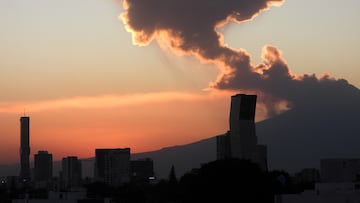WORLD
Could Mexico City run out of water? When could the megacity reach “day zero”?
The vast majority of Mexico has been suffering a major drought and there are fears that the capital city could run out of water in just a few months.

As temperatures rise and weather patterns become increasingly erratic, the spectre of climate change looms large over Mexico City, intensifying the threat of drought and jeopardising the city’s water security. The most pressing consequences for Mexico City is the exacerbation of drought conditions. Rising temperatures and altered precipitation patterns have disrupted the city’s traditional water sources, leading to dwindling reservoir levels and depleted aquifers. Nearly 90% of Mexico City is in severe drought.
“Several neighborhoods have suffered from a lack of water for weeks, and there are still four months left for the rains to start,” said Christian Domínguez Sarmiento, atmospheric scientist at the National Autonomous University of Mexico (UNAM).
Though downplayed by the government, “Day Zero” refers to the day when water will stop running in the city. Local media reports that Conagua, the Mexican water agency, is preparing for water to stop running on 26 June. This doesn’t mean every community will be affected equally and poor neighbourhoods will be especially badly hit. Access to clean and reliable running water is already uneven across different parts of the city, with some areas experiencing shortages or unreliable service, particularly in informal settlements (known as “colonias”) on the outskirts.
Why is Mexico City struggling with water?
Despite being surrounded by water sources, such as lakes and rivers, Mexico City has struggled with water scarcity due to over-extraction of groundwater, deforestation, and inadequate infrastructure for capturing and storing rainwater.
Historically, Mexico City has relied heavily on the surrounding lakes and rivers for its water supply. However, over time, many of these water bodies have been drained or heavily polluted due to urbanisation, industrial activities, and climate change. The city’s main surface water sources include reservoirs such as the Cutzamala system, which brings water from the Lerma and Balsas rivers located to the west of the city. 25% of the city’s water comes from this system but there have been increasing restrictions on its use due to its capacity being vastly reduced.
The legacy of colonialism has also played a role. The area where Mexico City now stands was originally inhabited by the Aztecs, who built their capital city of Tenochtitlan on an island in Lake Texcoco. When the Spanish conquistadors arrived in the 16th century they sought to impose their own system of water management, which involved draining the lakes and constructing colonial-era aqueducts to supply water to the growing city. This system has been pushed to breaking limit with the rapid expansion of the city.






